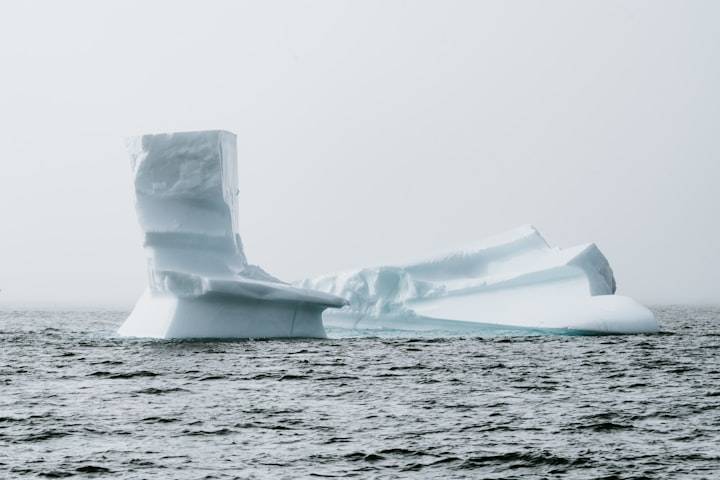**Introduction**
The Arctic is a land of breathtaking beauty and harsh conditions. It's also home to a rich culture with a fascinating mythology. Unlike many belief systems, Inuit traditions have remained largely untouched by outside influences. Today, we'll delve into the secrets of the Arctic and the people who call it home, exploring the myths and legends that have shaped their world.
**Understanding Inuit Beliefs**
Before diving in, let's establish some context. The Arctic Circle encompasses Northern Canada, Greenland, Alaska, and Siberia. These regions have always been inhabited by indigenous groups with various names. Today's inhabitants prefer "Inuit," meaning "people." So, "Inuit people" is redundant.
The term "Inuit" is broad, encompassing over 150,000 people spread across diverse regions. Naturally, beliefs and traditions vary. Not everything mentioned here applies universally.
The harsh Arctic environment discourages outsiders, allowing Inuit culture and traditions to remain remarkably consistent. The Inuit believe everything, human or animal, possesses a soul called an "Inua." This soul also exists in lakes, mountains, and plants, making everything interconnected. Respect for all living things is paramount.
**Hunting and Animal Spirits**
Survival for the Inuit depended on hunting animals. However, killing them posed a dilemma. To ensure the animal's Inua would be reborn, hunters adhered to specific rituals. These included hanging the animal hide, placing the severed head on a stick facing the corpse, or offering fresh water. These practices ensured the animal's spirit would be reborn and inform others of their treatment. Failure to perform proper rituals could anger the spirit, resulting in misfortune.
**Nanuk: The Great Polar Bear**
Polar bears, the apex predators of the Arctic (excluding humans), were crucial for the Inuit. They hunted polar bears for food and fur, worshipping Nanuk, the Great Polar Bear, who decided a hunter's worthiness. Special traditions appeased Nanuk and ensured successful future hunts. After a successful hunt, the polar bear's hide would be displayed in the hunter's igloo for several days as a sign of respect. Offerings like hunting tools were made to appease Nanuk's spirit in the afterlife.
**The Tunit: A Legendary Race**
Inuit stories tell of the Tunit, a legendary race considered the first inhabitants of these regions. Taller and stronger than the Inuit, they are believed to be the Dorset people, who predated the Inuit in the Arctic. Evidence suggests they didn't coexist. Stories depict the Tunit as timid and unable to build kayaks like the Inuit. Conflict arose when the Tunit borrowed a kayak without permission and returned it damaged. Fearing repercussions, the Tunit fled, never to return. Other stories depict them conceding the best hunting grounds to the Inuit and leaving in search of a new home.
**Kupit: The Aquatic Threat**
Lurking beneath the icy shoreline is the monstrous Kupit. Described as having webbed hands, scales, fins, and slimy green skin, the Kupit is more deceiving than it appears. Long fingernails, long hair, and a coat resembling those worn by Inuit women lure unsuspecting children close. Waiting by the shoreline, the Kupit snatches children who wander too close. Some claim a ghostly hum draws children near. The Kupit's fate with the children varies. Some stories say they drown and devour them, while others depict them preserving the children's energy for immortality. There are even accounts of families struggling with famine giving children to the Kupit, rarely as punishment, but to ensure their survival in the hope of retrieving them later. Hunters would wait near the floating children, cutting them free before sunrise and returning them to their families. The Kupit's near-immortality forced hunters to outsmart them, tricking them into transforming into killable whales or seals.
**Mahaha: The Tickling Demon**
The Mahaha, another grotesque demon, embodies mischief and sadism. Its gaunt frame, stringy hair, and long limbs resemble a human, but its piercing white eyes, icy blue skin, and sharp claws set it apart. The constant, uncontrollable manic giggling identifies the Mahaha before it attacks. Victims are "tickled to death," a fear surprisingly present in many cultures. Those who fall victim are found with a wide, frozen grin. The Inuit devised a simple solution: they'd lower the Mahaha a drink, then push it into the water's strong currents, carrying it away.
**Sedna: The Goddess of the Sea**
Sedna is a central deity in Inuit mythology, the goddess of the sea, all its creatures, and the underworld. Multiple stories explain her origin, often involving an angry father. The simplest story portrays Sedna as a giant with an insatiable hunger, leading to her attacking her parents. Enraged, her father throws her overboard, chopping off her fingers


